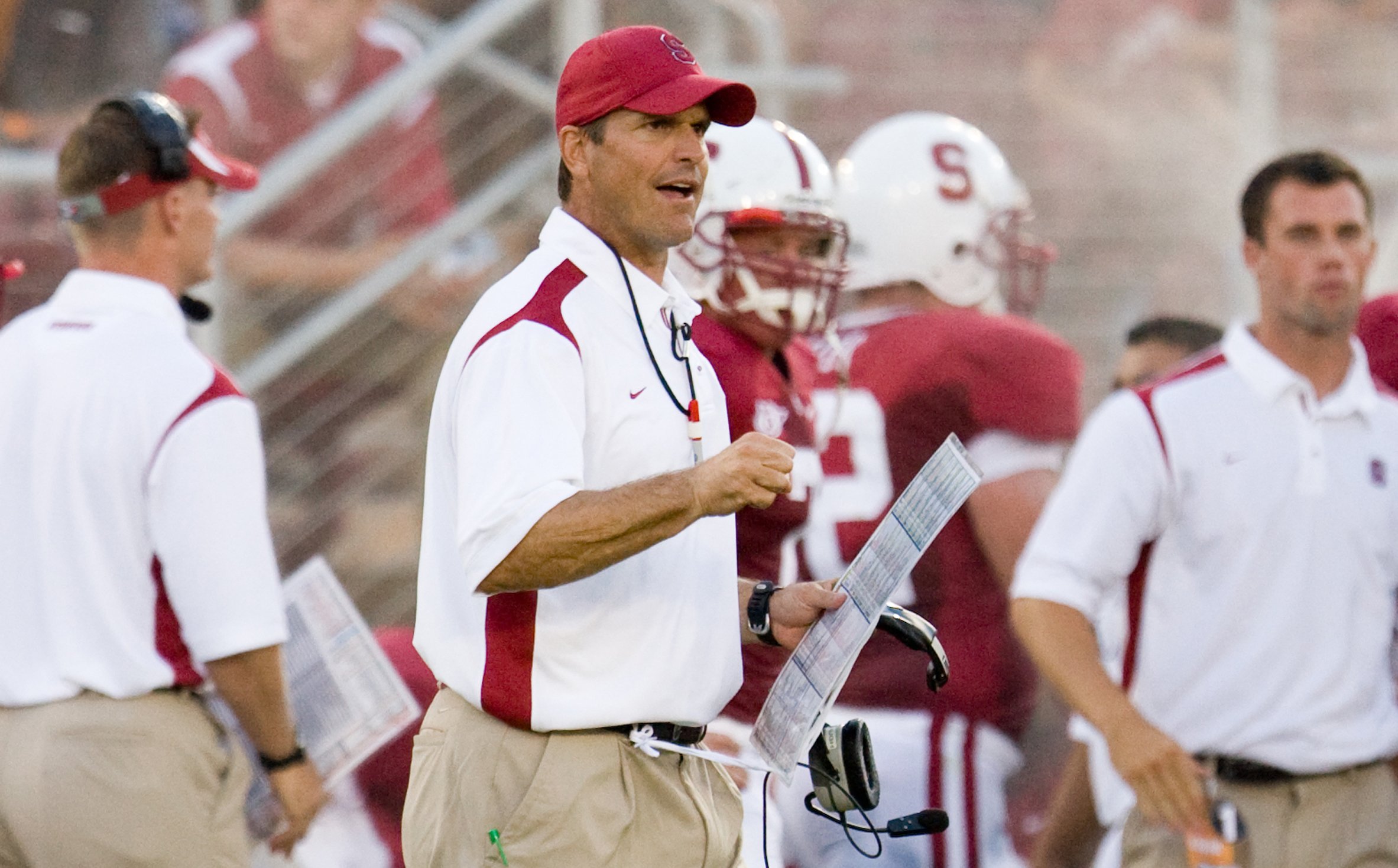The following is an excerpt from The Daily’s upcoming book, “Rags to Roses: The Rise of Stanford Football,” by Joseph Beyda, George Chen and Sam Fisher. The book will be sold electronically starting on July 15, and we will publish excerpts every Friday, including today’s installment on the 2007 season. Scroll down to the bottom of the page to sign up for updates on ordering information and future excerpts.
Head coach Jim Harbaugh’s practices meshed well with strength and conditioning coach Shannon Turley’s workouts; they weren’t about aimlessly breaking players down so much as putting a common plan into action, and his determination was contagious. He was known for his eagle-eyed focus, and it came straight from a love of football. During a film session, running back Anthony Kimble once asked Harbaugh about his own aspirations as a young player.
“He looked at me in the most serious face that I’ve ever seen on the man,” Kimble remembers, “and he told me, ‘Growing up, I wanted to play football as long as I can, coach football as long as I can and then die.’ And he turned back to the film and kept watching like nothing had ever happened.”

Harbaugh was known as a memorable quote within the program, even though he was notoriously tight-lipped with the media. Behind closed doors or out on the practice field, his sayings would range from motivational — “Football isn’t particularly fun. Winning is fun.” — to bizarre — “I’m frying the fish,” which meant he was singling out a weak player. And he had the booming voice to back it up.
Always a man of metaphor, Harbaugh now draws on preindustrial farming technology (what else?) to describe the work he needed from his players that first offseason.
“You took yourself back to the 17th century, back when they had flywheels in mills and things,” he says. “Big, 2,000-pound rock flywheel. And the hard part is to get it started, to get it moving. And once you get it moving, that thing just gets faster and faster and faster and faster. And it does great work, it accomplishes what it’s supposed to accomplish. But when it’s at a stop, the force that it takes to get it moving [is huge].”
There was no proof that his model would work, no tangible evidence that a football team with a reputation as soft would become one of the toughest in the country. But that didn’t stop the players in Harbaugh’s locker room from latching on.
“They were doing it on faith,” Harbaugh says. “You couldn’t see it, you know? The definition of faith: belief without seeing. They were actually pushing. They had the hands on it and were driving it. So those will always be, to me, the true blue-collar guys that did the heavy lifting.”
No group embraced that challenge better than the former recruiting class of 2005, rising juniors like offensive tackle Chris Marinelli, tight end Jim Dray and safety Bo McNally. Walt Harris’ breakdown tactics had proven especially ineffective against those players, who were known for their pride and competitive spirit. Marinelli, after all, had been among Harris’ most outspoken critics at the end of 2006.
The same attributes that led those players to resist Harris made them thrive under Harbaugh and Turley, who brought competition into every workout, every practice and every drill.
“Coach Harbaugh did an unbelievable job from day one of creating this ultra-competitive atmosphere,” McNally says.
Harbaugh’s practices started with the Oklahoma Drill, which pits two players against each other in a full-contact battle to win the line of scrimmage. That’s not unusual in and of itself, but Harbaugh’s rendition included the entire team — not just linemen, but skill players too — and went on for what Dray calls an “unheard-of” 20 minutes.
“I had to come out ready to compete every day,” Dray says. “If you didn’t, everyone could see it. It was just you against the other guy. If you didn’t want to come out and compete every day, then you weren’t playing.”
Most importantly, though, Harbaugh remained supportive of the players who were willing to put in the effort he demanded.
“If you got in a fight in a back alley you wanted Coach Harbaugh with you,” says Tavita Pritchard, another member of the 2005 class. “That’s what I love about this staff and what he brought here. They are guys that, first of all, they care about their players. They cared about us — you could feel that right away. And they wanted to teach. They wanted to teach the game.”
To contact the authors, send an email to ragstoroses ‘at’ stanforddaily.com.
Previous excerpts:
2006: On quick kicks and bear crawls
Preface: Stanford Daily announces football book
